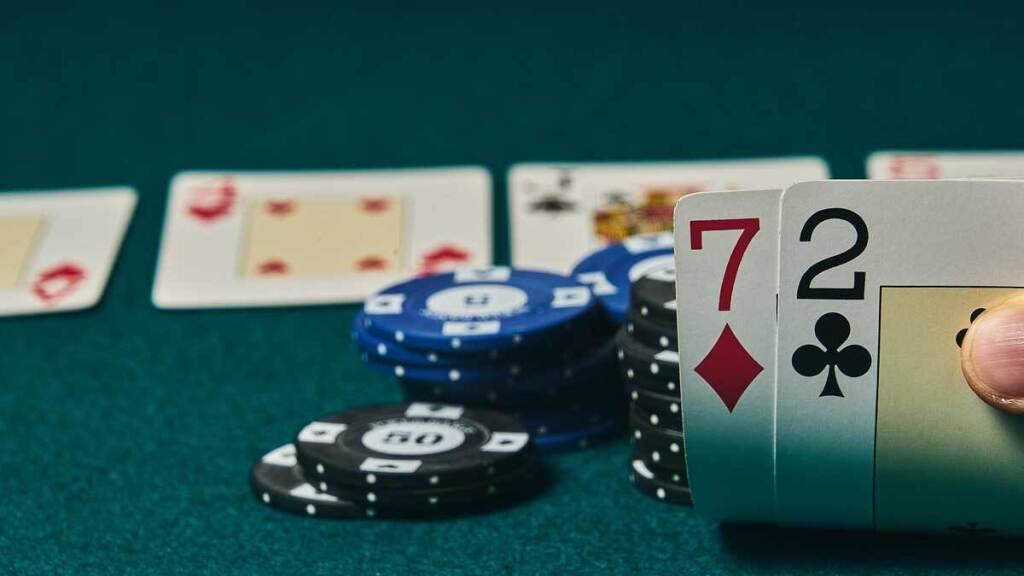Skilled bluffers do more than fire random bets. They construct a believable storyline from preflop to river. Every action must logically support that story if a player represents a strong hand. A sudden, oversized river bet after passive play on earlier streets rarely convinces opponents. The best bluffers maintain consistency. This makes their bluffs look identical to their value hands.
Hand selection plays a role in storytelling. Bluffing with hands that can improve, like straight or flush draws, strengthens credibility. A semi-bluff can still win on later streets if an opponent suspects a bluff. The best bluffers balance their range to avoid overusing bluffs in predictable situations.
Misdirection Through Timing and Bet Patterns
The best bluffers control their bets' sizes, timing, and rhythm. A well-timed delay before a river bet can suggest indecision. Conversely, an immediate shove after a previous check might sell the story of a slow-played monster hand. These subtleties add credibility to bluffs and make opponents second-guess their reads.
A good example of this can be seen when players play Texas Hold'em at high-stakes cash games. Professionals demonstrate when to manipulate timing to disguise their true hand strength. Mixing up bet timing and patterns prevents opponents from detecting predictable tendencies.
Opponent Profiling and Bluff Susceptibility
Not every opponent folds to bluffs. Effective bluffers categorize players and adjust their approach. Tight players who overfold on later streets make for good bluff targets. Analyzing opponent tendencies, such as whether they frequently fold to continuation bets, helps determine when bluffing is profitable.
Table image also matters. Opponents will be more inclined to call if a player has been caught bluffing multiple times. Conversely, a tight image makes bluffs more believable. Recognizing how opponents perceive a bluffer allows for better execution.
The Role of Mathematics in Bluffing
A well-executed bluff goes beyond psychology. It requires precise calculations to determine when it is profitable. For example, a $50 bluff into a $100 pot must succeed at least once in three to break even. Understanding pot odds and the minimum fold equity required ensures that a bluffer is not making mathematically unprofitable plays.
Game theory optimal strategies provide another approach. Bluffers make themselves less exploitable by balancing bluffs with value hands at proper frequencies. However, purely GTO-based bluffing may not be as profitable as an exploitative approach.
Advanced Techniques: Overbets, Check-Raises, and Triple Barrels
Bluffing techniques vary depending on the situation. Overbetting, for example, puts maximum pressure on an opponent by forcing them to risk a large portion of their stack. This move is most effective when the board strongly favors the bettor's perceived range.
Check-raising can also be an effective bluffing tool. A player can force an opponent to fold weaker hands while building a pot they can take down later by check-raising the flop or turn aggressively. Timing is key here. Bluffing in spots where an opponent likely missed the board improves success rates.
Triple-barrel bluffs, where a player continues betting aggressively on all three postflop streets, require commitment. The best bluffers pick spots where a triple barrel makes logical sense based on board texture and opponent tendencies. A well-sized river bet can be enough to push them off their holdings if an opponent has shown weakness throughout the hand.
Exploitative Play and the Art of Persuasion
Bluffing is about persuasion. A successful bluffer convinces an opponent they are beat. Strong players do this through careful betting sequences rather than random aggression. Exploitative players take it further by identifying mistakes in their opponents' strategy and capitalizing on them.
Some opponents fold too often to river bets. This makes them vulnerable to frequent bluffs. Others call too often and require a more value-heavy approach. Knowing who to bluff and when is as important as executing the bluff itself.
Books, Training, and Learning From the Pros
The best bluffers refine their skills through study and practice. Books like The Book of Bluffs and Exploitative Poker provide insight into effective bluffing techniques. Training tools and solver software allow players to analyze bluffing spots and learn optimal strategies.
Watching professionals also helps. Historical hands, such as Gavin Griffin's bluffs in the 2004 WSOP, offer lessons in balancing bet sizing, timing, and storytelling. Mastering bluffing takes extensive hand analysis and game awareness. The most effective bluffers understand that their bets must tell a believable story.

















0 comments